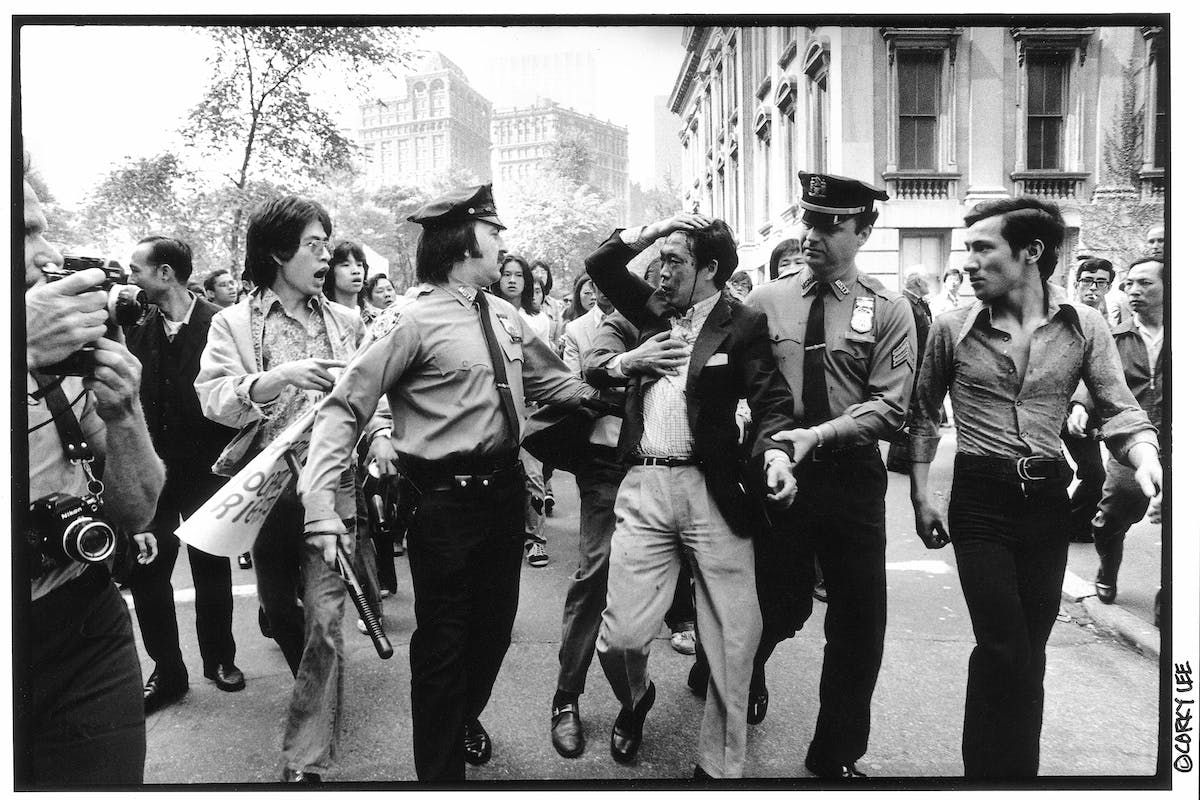Documentary Flips the Focus, Introducing Us to a Longtime Photographer of Asians in New York, Corky Lee
Based on what we see of Lee’s vast institutional knowledge of Asian American history, customs, and organizations, particularly as it pertains to New York, his passing amounts to a great loss.

For 50 years, photographer Corky Lee captured nearly every major event related to Asian Americans in New York. From huge protests and local rallies to celebratory festivals and organizational gatherings, Mr. Lee seemingly was always there with his camera, photographing consequential movements and small moments alike.
While his work frequently went unheralded, a new documentary, “Photographic Justice: The Corky Lee Story,” corrects this oversight by focusing on the lensman’s life and career, along with emphasizing how his photos often sought to highlight sociopolitical struggle.
Born at Queens after World War II to Chinese-American immigrants, Lee attributed his interest in photography, or at least justice, to the time in junior high school when he first saw the famous photo of the completion of the transcontinental railroad. He had read about how 12,000 Chinese workers had been instrumental in building the train track — and yet not one was pictured at the “Last Spike” ceremony.
This omission not only drives an adult Lee to document inequality and neglect but provides the film with a recurring motif, such as in 1974 when he recorded a demonstration over a Chinatown housing project where picket signs referenced the railroad, and in 2014 when he helped organize a contingent of Asian Americans at Utah’s Golden Spike National Historic Park to restage the 1869 photo.
Another of Lee’s most famous pictures was taken at a 1975 march against police brutality after a young Chinese American engineering student was beaten by cops. During the march, Lee was able to capture another instance of violence by the police, and this photo made the front page of the New York Post. In portraying anger and opposition within Chinatown, the photographer demonstrated that Chinese immigrants, who were steeped in tradition, and first-generation Chinese Americans, who were seeking assimilation, could come together to display political power and discard the community’s reputation as compliant.
An affable, subtly ironic presence despite his self-proclaimed “activist” intent, Lee is featured throughout the documentary via footage director Jennifer Takaki filmed over nearly 20 years. Following him as he shot cultural pastimes, parades, and protests, Ms. Takaki illustrates how Lee didn’t limit himself to covering just the Chinese American experience, but would snap images at events thrown by the Korean, Thai, Sikh, Philippine, Japanese, Pakistani, and Indian communities, as well as other groups in the Pan-Asian movement.
As a secretary of transportation under President George W. Bush, Norman Mineta, quips, “It isn’t an Asian Pacific Islander event if Corky Lee isn’t around.”
Sadly, Lee died from the coronavirus at the age of 73 in January 2021, and based on what we see of his vast institutional knowledge of Asian American history, customs, and organizations, particularly as it pertains to New York, his passing amounts to a great loss. Placing his death within the context of President Trump’s “China Virus” comments and the rise of anti-Asian assaults, Ms. Takaki reaffirms Lee’s belief that much work is still left to be done to counter prejudice, discrimination, and hate.
Some of Lee’s best photos, like one taken after 9/11 of an Asian fireman sitting on the fender of his fire truck affixed with a medal dragon, combine not just immediacy but intimacy and artistry as well, rendering social commentary as excessive. Cynthia Zantzic, editor of the book “100 New York Photographers,” speaks of the craft in his work and is one of the few pundits to do so in the documentary.
“Photographic Justice,” playing at DCTV’s Firehouse Cinema at Chinatown starting Friday and airing on PBS next month, makes for a loving tribute and valuable testament of one man’s inexhaustible mission to document the daily struggles and momentous moments of his fellow Asian Americans, the fastest-growing minority group in America.

